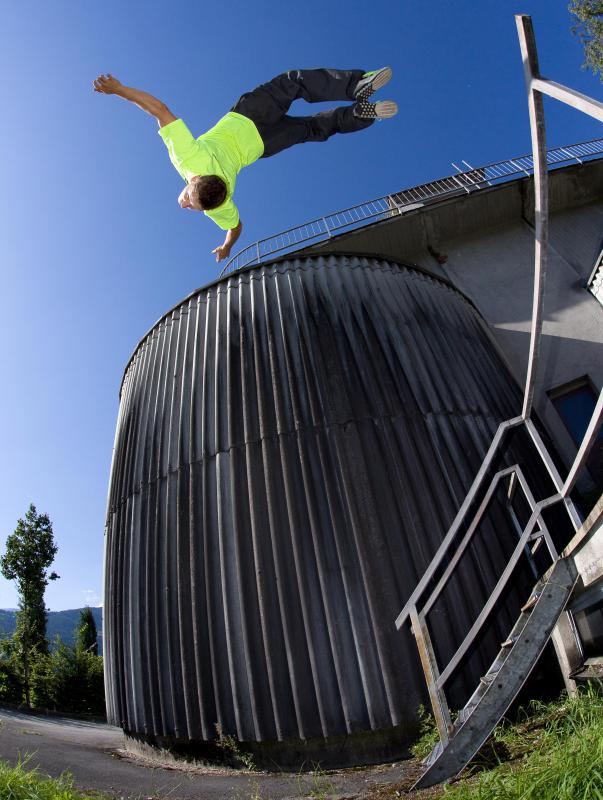At WiseGEEK, we're committed to delivering accurate, trustworthy information. Our expert-authored content is rigorously fact-checked and sourced from credible authorities. Discover how we uphold the highest standards in providing you with reliable knowledge.
How Do I Keep a Free Running Log?
Individuals who engage in the urban acrobatics activity called free running can keep a free running log by marking down all of the various activities contained in this somewhat complex form of running. Along with keeping times and distances, as normal runners do in running logs, those who are keeping free running logs will also include other notes on the kinds of techniques involved in this recreational sport. A free running log can provide help with a diet plan, documentation for overall health, or just a kind of testament to a person’s individual free running style.
Some of the basic elements often included in free running logs will be times for the activities, as well as distances covered. These distances may be shorter than those generally logged for regular running, since the free runner expends more calories in complex activities like vaults and flips. One of the basic functions of a log is to keep track of when someone works out, so times of the day and days of the week will often feature in a free running log.

Another important aspect of a free running log is noting the particular areas or spaces where the free runner works out. This is partially because, as a variant of the original parkour sport, free running is an activity where the runner utilizes the particular topography or features of a route or space. Logging the venues for free running is part of detailing how the free runner accomplishes various acrobatics utilizing local landmarks or terrain.

In addition to the venues, a free running log will often include details on specific vaults, flips, or spins. Free runners recognize specific kinds of acrobatics as part of their normal routines. These include the dash vault, where the free runner uses their arms to go up and over something, as well as the dive roll, a way to lower the body or land, and a diving front flip that helps the free runner get over certain obstacles.
There are also specific activities for interacting with walls, such as the wall flip and the wall spin. In these activities, the free runner often uses the impact with the wall to get subsequent momentum by pushing against the wall and propelling their body back and upward. Railings can also provide for some other types of free running acrobatics that might be noted in the free running log.
AS FEATURED ON:
AS FEATURED ON:












Discuss this Article
Post your comments